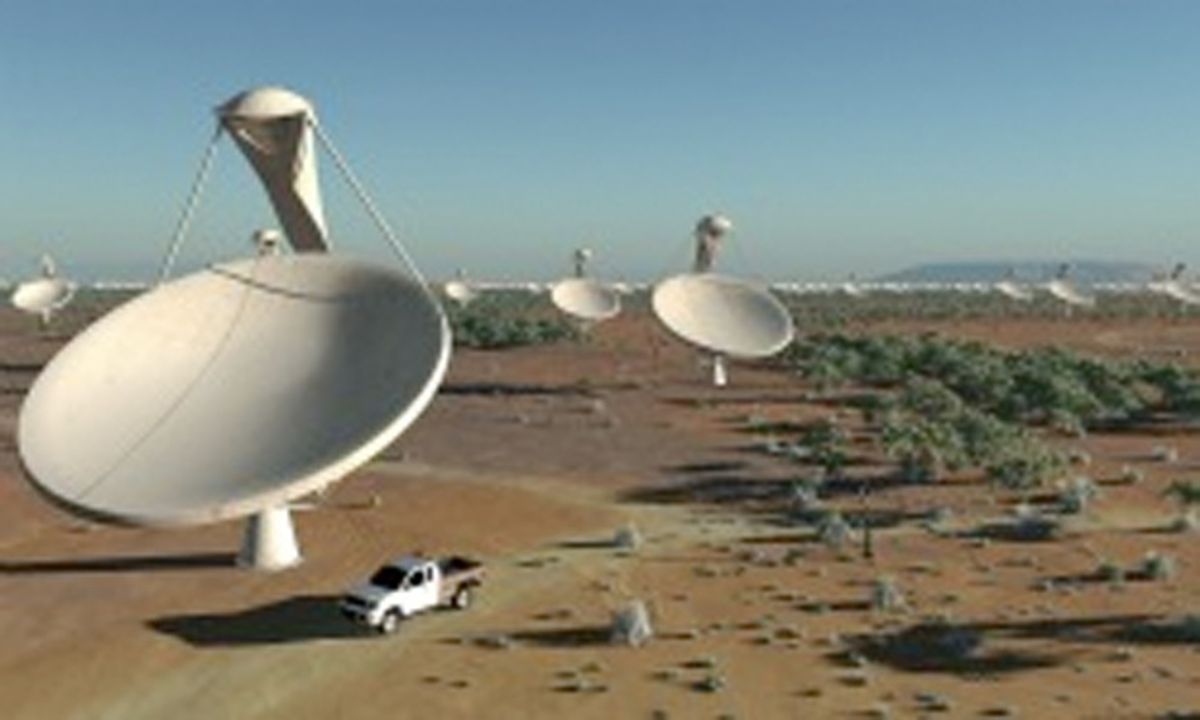Astronomers have big plans for the SKA. The telescope is expected to provide a new window into the lives of the universe’s first stars, reveal more details on the effect of dark matter and dark energy on the universe’s expansion, and uncover many more pulsars, spinning stellar remnants with clockwork-like signals that could be used to confirm the existence of gravitational waves.
That is, of course, if astronomers and engineers can figure out how to build it. Construction is set to begin in 2017 (in either the Australian outback or South African desert) but some key technical details still need to be sorted. Among them is handling the sheer quantity of data coming from the telescopes.
This week, IBM and Netherlands-based astronomical institute Astron, which works on the Square Kilometer Array, announced they plan to come up with a list of the best technologies for the job. The effort will center around a five-year, 32.9-million-euro project called DOME, to be based in Drenthe, the Netherlands, which has been created to support the SKA.
The DOME team members will have their work cut out for them. The SKA is set to produce roughly 1 exabyte of data each day, about twice today’s daily Internet traffic. But the total amount of data collected by the array – before the radio signals are combined and correlated to create the SKA's output – will be 100 to 1000 times more, says IEEE Senior Member Ronald Luijten, a senior manager at IBM Research in Zurich, Switzerland.
Transmitting, processing, and storing all that radio data with today's computing technology would be impractically expensive and energy intensive. "We know it can be done in terms of algorithms and the science. We just don’t know how to do this in a practical sense,” says Luijten. “If we were to build the computing parts of SKA today, we would need millions of high grade servers.”
The SKA, like a number of other data-intensive scientific endeavors, is facing an exascale problem, Luijten says. The telescope will need technology that’s comparable to the level of sophistication that’s being targeted by the supercomputing community before the end of the decade. As IEEE Fellow Peter Kogge outlined in a feature for IEEE Spectrum last year, energy demands will make reaching this level of computation difficult. The SKA team will face some additional challenges, too, since they can't rely on a centralized computing facility. At least some data processing will have to be done on or close to the thousands of antennas and dishes, in an environment that was hand-picked for its lack of infrastructure.
DOME's researchers—which will number about 50—will focus on seven topics, picked by IBM, that will be needed to build the SKA and could also have an impact on commercial servers.
One of the technologies at the top of the list is 3D packaging, which stacks chips one on top of another to reduce the energy consumed by data lines. Transporting data from one point to another dominates power consumption in chips. But although stacking will be vital to driving down energy consumption, Luijten says it won't be enough to meet the SKA's needs.
So the collaboration will also look at other energy saving approaches, including the possibility of building custom accelerators – specialized chips like graphics processing units that are designed for speedy data handling. DOME will also explore new forms of storage, like phase change memory, although Luitjen says that at the end of the day, SKA’s data is still likely to be archived on tried-and-true tape. “We still believe that for the next two decades, tape will be the medium for archives. [It’s still the] most cost effective and stable,” Luitjen says. IBM says that one of DOME's goals will be to determine how much data it's possible to keep.
(Illustration: SPDO/TDP/DRAO/SwinburneAstronomy Productions)
Rachel Courtland, an unabashed astronomy aficionado, is a former senior associate editor at Spectrum. She now works in the editorial department at Nature. At Spectrum, she wrote about a variety of engineering efforts, including the quest for energy-producing fusion at the National Ignition Facility and the hunt for dark matter using an ultraquiet radio receiver. In 2014, she received a Neal Award for her feature on shrinking transistors and how the semiconductor industry talks about the challenge.




